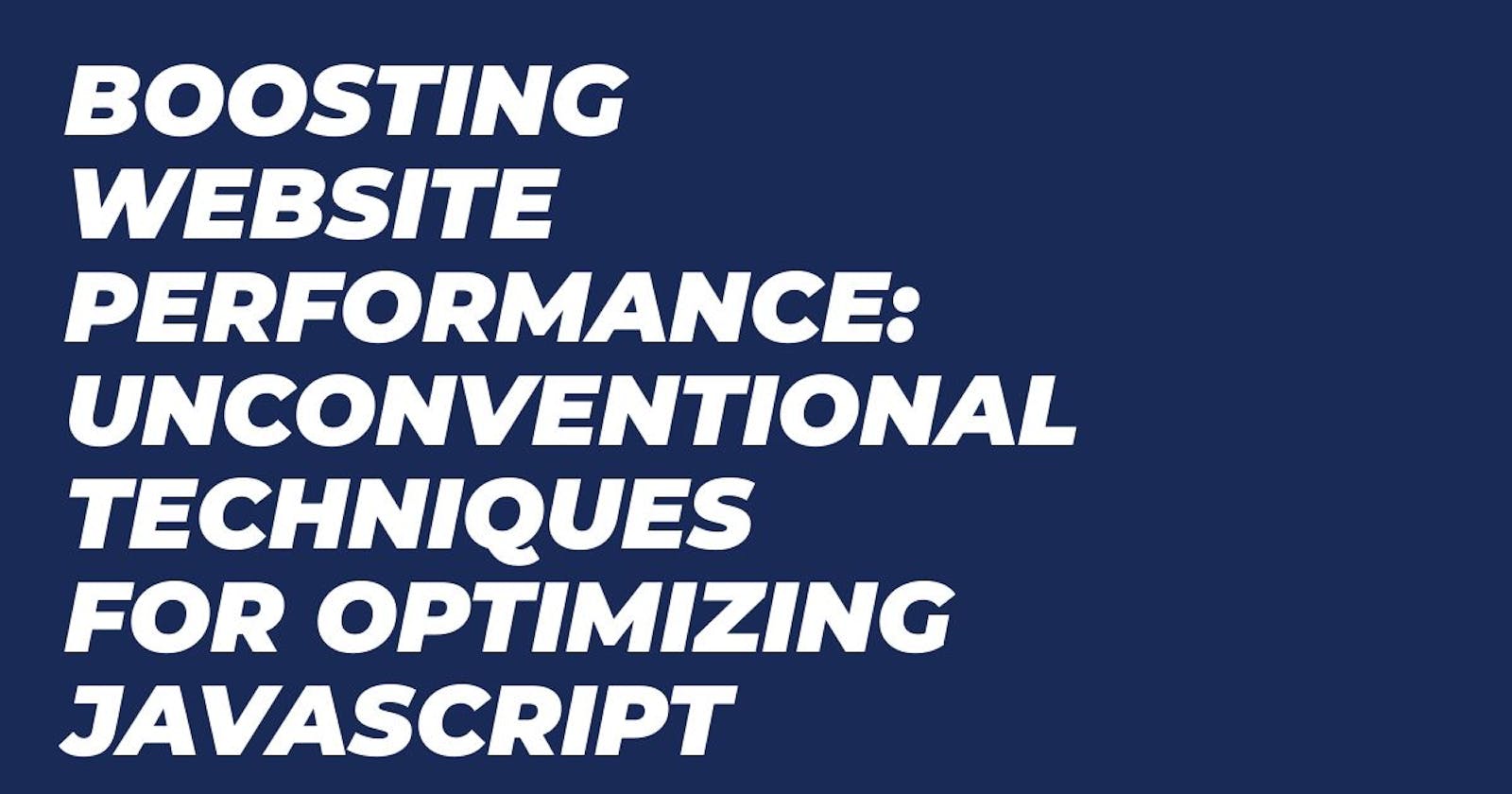The performance of a website plays a crucial role in its success. Users expect fast load times and seamless interactions, and any delays or glitches can result in frustration and abandonment. While traditional techniques for optimizing JavaScript are well-known and widely implemented, some unconventional methods can further enhance website performance. In this article, we will explore these techniques and discuss how they can be leveraged to boost your website's performance.
Analyzing JavaScript Execution
Before diving into the unconventional techniques, it's important to understand how JavaScript execution affects website performance. JavaScript is a powerful language, but its execution can sometimes hinder performance due to various factors such as blocking scripts, rendering delays, and excessive CPU usage. By analyzing the execution flow of your JavaScript code, you can identify bottlenecks and areas for improvement.
Optimizing Loading and Execution Strategies
Optimizing the loading and execution strategies of JavaScript code can have a significant impact on website performance. One technique is to use dynamic script loading, which involves loading JavaScript files only when they are needed. This reduces the initial load time and allows important scripts to be prioritized, ensuring faster rendering and improved overall performance.
Another technique is code-splitting, where JavaScript code is divided into smaller, more manageable chunks. This allows the browser to load only the necessary code for specific pages, reducing the initial load time and improving the overall user experience.
Leveraging Caching and Compression
Caching and compression techniques can greatly enhance website performance by reducing the amount of data that needs to be transmitted between the server and the client. Utilizing browser caching allows static resources, such as JavaScript files, to be stored locally on the user's device, resulting in faster subsequent page loads. Additionally, enabling compression, such as GZIP, can significantly reduce the size of JavaScript files, leading to faster downloads and improved performance.
Minification and Obfuscation
Minification and obfuscation are common techniques used to optimize JavaScript code. Minification involves removing unnecessary characters and whitespace from the code, resulting in a smaller file size. This reduces the download time and improves the overall performance of the website. Obfuscation, on the other hand, makes the code more difficult to understand and reverse-engineer by renaming variables and functions. While these techniques may not directly enhance performance, they contribute to faster load times and better user experiences.
Implementing Lazy Loading
Lazy loading is a technique that defers the loading of non-critical JavaScript code until it is required. By loading JavaScript code only when it is necessary, you can reduce the initial load time and prioritize the rendering of important content. This technique is particularly useful for websites with extensive JavaScript libraries or when certain functionality is only applicable to specific user interactions.
Conclusion
In conclusion, optimizing JavaScript is crucial for boosting website performance. By implementing unconventional techniques like dynamic script loading, code splitting, caching, compression, minification, obfuscation, and lazy loading, you can improve load times, enhance user experiences, and ultimately achieve a highly performant website. Remember to analyze your JavaScript execution flow and choose the techniques that best suit your specific needs. Embrace these unconventional techniques and watch your website soar to new heights!
